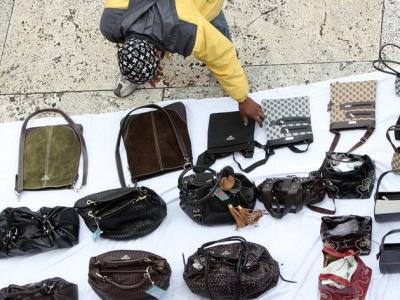Trade in fake Italian goods costs economy billions of euros

ROME – The Organisation for Economic Co-operation and Development (OECD) has recently revealed that the trade in fake Italian goods, including luxury handbags, watches, foodstuffs and car parts, costs the economy billions of euros each year.
These items are taking a significant bite out of Italy’s economy, equivalent to 1-2 per cent of GDP in terms of lost sales, the report reveals.
Trade in Counterfeit Goods and the Italian Economy (click to download the full report) estimated that the total value of counterfeit and pirated Italian goods sold internationally in 2013 was over 35 billion euros, equal to 4.9% of global Italian manufacturing sales.
This resulted in over 25 billion euros in lost sales by Italian companies, when Italy’s GDP was 1.6 trillion euros.
Previous OECD analysis of data from nearly 500,000 customs seizures around the world in 2011-2013 has shown that trade in counterfeit goods is worth nearly half a trillion dollars per year, or 2.5% of global imports.
US, Italian and French brands are amongst the hardest hit. Italy is particularly vulnerable, since its economy thrives on producing high-value products, protected by intellectual property rights and trademarks.
As well as assessing the impact of trade in fake Italian products, the report also looks at the impact imports of counterfeit goods have on Italy.
Fake imports in 2013, it reveals, were worth over 10 billion euros, or 3% of imports, and resulted in foregone domestic sales by Italian wholesalers and shops of around 7 billion euros. The fake items were imported mainly from China (50%) and Hong Kong (29%), followed by Greece (6%), Singapore (4%) and Turkey (2%).
The combination of trade in fake Italian products and imports of counterfeit goods resulted in a loss of 10 billion euros in public revenues in Italy, or 0.6% of Italian GDP.
Counterfeiting and piracy also led to the loss of at least 87,000 jobs in Italy in 2013, equivalent to 2% of the country’s full-time equivalent employees.
The highest losses in sales in the Italian wholesale and retail sectors due to counterfeit and pirated imports in 2013 were for high-tech electronic, electrical and optical products, followed by clothing, footwear, leather and related products.
In terms of market share, the biggest losses were in the watch and jewellery sector, where the counterfeit market caused a 7.5% loss in sales.
The report shows that around half of the fake goods smuggled into Italy in 2013 were sold to consumers who were aware they were buying fake products, with the remaining share purchased unknowingly.
The share of fakes bought knowingly in Italy ranges from 15% from food items to 60% for watches and IT and communications devices.
The OECD is working with governments to address gaps in regulation and poor law enforcement that enable counterfeit trade, largely run by organised crime gangs, to flourish.


